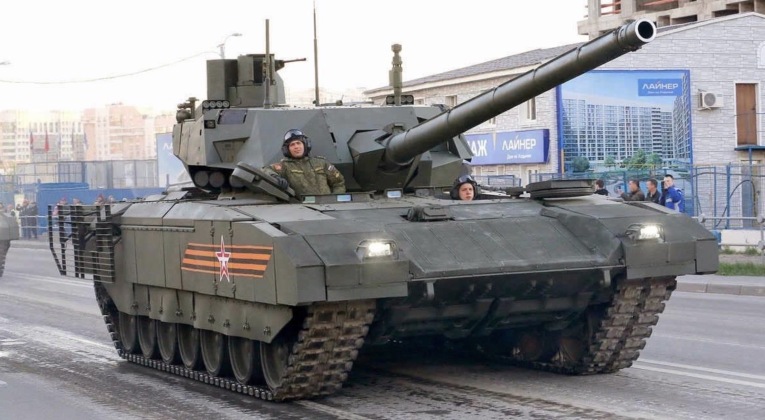Since its unveiling in 2015 new details regarding the performance of the Russian T-14 Armata tank have continued to emerge, with the vehicle being a drastic departure from prior Russian designs and potentially the only tank in the world of a new generation. Notable features have ranged from the extreme penetrative capabilities of its Vacuum-1 rounds and its very long engagement range over triple that of the top Western tanks, to its advanced armour protection systems and network centric warfare capabilities. Perhaps the most outstanding feature, however, is the T-14’s turret and crew seating arrangement, with three crew protected in an armoured compartment made from composite materials isolated from the remainder of the vehicle. This provides much greater survivability, but also necessitates the use of an unmanned turret with the gunner in the compartment being separated from the gun itself. The T-14’s use of an unmanned turret is somewhat revolutionary, and a feature more recently seen on the German Panther tank design unveiled in June 2022 which has yet to be confirmed for production. Aside from providing greater protection for the gunner, the turret design has the important advantage of making the tank very considerably lighter by foregoing the need for extensive turret armour, which in turn provides much greater mobility over traditional tanks with manned turrets without sacrificing performance.

The T-14’s turret is not well armoured, meaning it cannot take hits from even older APFSDS projectiles and can protect only against autocannon and lighter projectiles. The turret is nevertheless no less survivable than those of other tank designs, since the bulk of its size is represented by a screen that reduces its radar and thermal signatures and provides a degree of armoured protection but does not contain any essential electronics or mechanisms. The part of the turret containing mechanisms is extremely small, and from the front represents under a third of the turret size little of which is visible other than directly behind the gun mantlet. The area behind the mantlet is poorly armoured on all known tank designs due to the need for the gun to pivot, but since this is essentially the only part of the T-14’s turret that could disrupt its function by taking a hit the tank forgoes the need for greater armour on the turret where turrets that accommodate a crew member would require such protection. The very small target is no easier to hit than the gun mantlet on any other turret design, and is protected against HEAT and to a lesser extent against APFSDS projectiles by the Afghanit active protection system. Without the need for an armoured turret, designers were able to reduce the T-14’s weight considerably and place its centre of mass much closer to the ground. This kind of design is expected to be widely adopted as foreign countries move to develop their own new generations of armour later in the decade and into the 2030s, with the strong lead Russian inherited from the Soviet Union in tank development allowing it to emerge as a pioneer in this regard despite the significant delays to the T-14’s development. The tank is currently in serial production, but has yet to be delivered to the Russian Army with the scale on which it will be fielded remaining uncertain.
